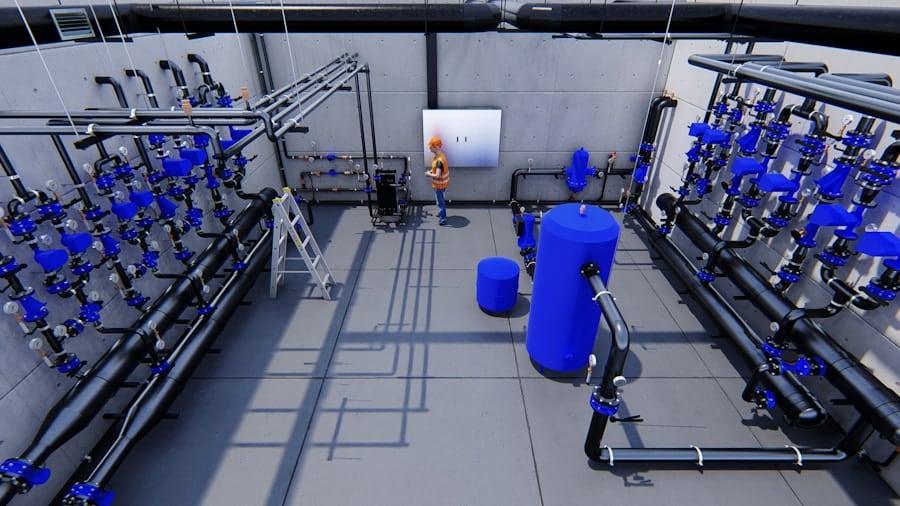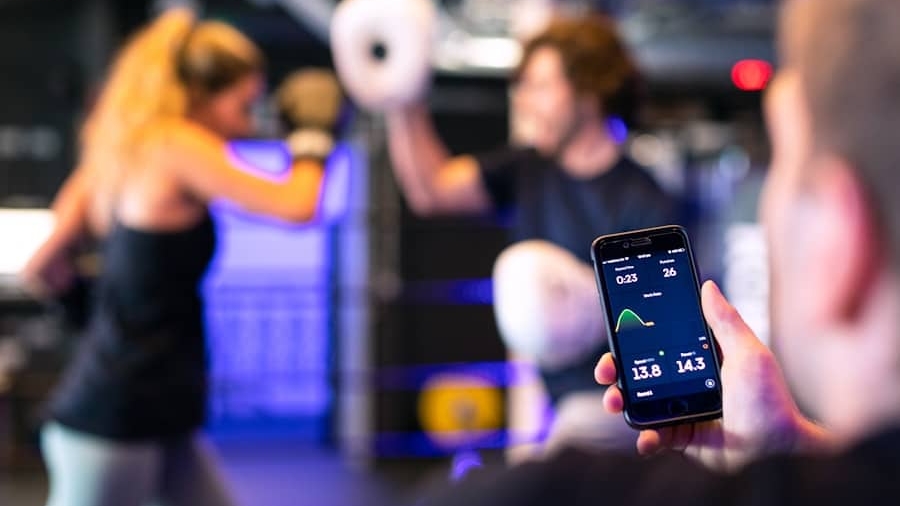The concept of the metaverse has rapidly evolved from a niche idea in the realm of technology to a burgeoning reality that encompasses various aspects of daily life, including fitness. Metaverse gyms represent a revolutionary shift in how individuals engage with physical exercise, merging the physical and digital worlds into a cohesive experience. These virtual fitness environments allow users to participate in workouts, classes, and training sessions from the comfort of their homes while interacting with others in a shared digital space.
The allure of metaverse gyms lies not only in their innovative approach to fitness but also in their ability to create immersive experiences that traditional gyms cannot replicate. As technology continues to advance, the integration of augmented reality (AR) and virtual reality (VR) into fitness routines has become increasingly sophisticated.
This transformation is not merely about convenience; it represents a fundamental change in how people perceive and engage with fitness. The metaverse gym experience is designed to be engaging and motivating, tapping into the psychological aspects of gaming and social interaction to encourage users to maintain their fitness regimens.
Key Takeaways
- Metaverse gyms are virtual fitness spaces that use technology such as virtual reality to provide a unique and immersive workout experience.
- Virtual fitness offers benefits such as convenience, accessibility, and the ability to customize workouts to individual needs and preferences.
- The rise of virtual personal trainers allows for personalized and interactive fitness experiences, providing guidance and motivation in a virtual setting.
- Virtual reality plays a crucial role in metaverse gyms by creating realistic and engaging environments for workouts, enhancing the overall fitness experience.
- Metaverse gyms offer a social aspect by allowing users to connect with others, participate in group workouts, and engage in virtual fitness communities.
The Benefits of Virtual Fitness
One of the most significant advantages of virtual fitness is accessibility. Traditional gyms often require a commute, membership fees, and adherence to specific hours of operation. In contrast, metaverse gyms are available 24/7, allowing users to work out whenever it suits them best.
This flexibility is particularly beneficial for individuals with busy schedules or those who may feel intimidated by the atmosphere of a conventional gym. The ability to access a wide range of workouts and classes from home can significantly lower barriers to entry for many people, making fitness more inclusive. Moreover, virtual fitness environments often provide a diverse array of workout options that cater to various interests and fitness levels.
Users can choose from yoga sessions, high-intensity interval training (HIIT), dance classes, or even martial arts—all within the same platform. This variety not only keeps workouts fresh and exciting but also allows individuals to explore new forms of exercise they may not have considered otherwise.
The Rise of Virtual Personal Trainers

As the demand for personalized fitness solutions grows, so too does the emergence of virtual personal trainers within the metaverse. These trainers leverage advanced technology to offer tailored workout plans and real-time feedback, creating a more individualized experience for users. Unlike traditional personal training sessions that may be limited by time and location, virtual trainers can connect with clients from anywhere in the world, providing guidance and support through video calls or interactive avatars in the metaverse.
The effectiveness of virtual personal trainers is further enhanced by their ability to utilize data analytics. Many platforms track user performance metrics such as heart rate, calories burned, and workout duration, allowing trainers to adjust programs based on real-time feedback. This data-driven approach not only helps clients achieve their fitness goals more efficiently but also fosters a sense of accountability.
Clients are more likely to stay committed when they know their progress is being monitored and that they have a dedicated professional supporting them every step of the way.
The Role of Virtual Reality in Metaverse Gyms
Virtual reality plays a pivotal role in shaping the metaverse gym experience. By immersing users in lifelike environments, VR technology enhances motivation and engagement during workouts. For instance, individuals can find themselves cycling through scenic landscapes or participating in a dance class set against a vibrant city backdrop.
This level of immersion can make workouts feel less like a chore and more like an adventure, encouraging users to push their limits and explore new fitness horizons. Furthermore, VR technology allows for innovative workout formats that would be impossible in traditional settings. For example, users can engage in virtual obstacle courses or participate in interactive games that require physical movement.
These experiences not only provide an entertaining way to exercise but also promote physical activity through play—a concept that resonates particularly well with younger audiences. As VR technology continues to advance, we can expect even more creative applications within metaverse gyms that will redefine how we approach fitness.
The Social Aspect of Metaverse Gyms
One of the most compelling features of metaverse gyms is their inherent social aspect. Unlike solitary workouts at home or even traditional gyms where social interaction can be limited, virtual fitness environments foster community engagement. Users can connect with friends or meet new people from around the globe while participating in group classes or challenges.
This sense of camaraderie can significantly enhance motivation and accountability, as individuals are more likely to stick to their fitness goals when they feel part of a supportive community. Additionally, many metaverse gyms incorporate social features such as chat functions, leaderboards, and collaborative challenges that encourage interaction among users. For instance, participants might compete against each other in real-time during a virtual race or share their achievements on social media platforms integrated within the gym environment.
These interactions not only make workouts more enjoyable but also create opportunities for users to form friendships based on shared interests in fitness and health.
The Future of Virtual Fitness Technology

Personalized Workout Experiences
Innovations such as artificial intelligence (AI) are expected to play a significant role in personalizing workout experiences further. AI algorithms can analyze user data to create highly customized training programs that adapt over time based on performance and preferences. This level of personalization could lead to more effective workouts and improved outcomes for users.
Enhanced Experience through Wearable Technology
Moreover, as wearable technology becomes increasingly sophisticated, its integration with metaverse gyms will likely enhance the overall experience. Devices that monitor biometric data—such as heart rate variability, sleep patterns, and stress levels—can provide valuable insights into an individual’s health status.
Comprehensive Feedback for Overall Well-being
By combining this data with virtual training programs, users can receive comprehensive feedback that addresses not only their physical performance but also their overall well-being.
Challenges and Limitations of Metaverse Gyms
Despite the numerous advantages offered by metaverse gyms, several challenges and limitations must be addressed for widespread adoption. One significant concern is the accessibility of technology itself; not everyone has access to high-speed internet or advanced VR equipment necessary for an optimal experience. This digital divide could exacerbate existing inequalities in health and fitness access, particularly among lower-income populations who may already face barriers to traditional gym memberships.
Additionally, there are concerns regarding user safety and injury prevention within virtual environments. While immersive experiences can enhance motivation, they may also lead individuals to push themselves beyond their limits without proper guidance or supervision. Ensuring that users receive adequate instruction on form and technique is crucial to preventing injuries during workouts conducted in the metaverse.
Furthermore, as with any online platform, issues related to privacy and data security must be carefully managed to protect users’ personal information.
The Impact of Metaverse Gyms on the Fitness Industry
The emergence of metaverse gyms signifies a transformative moment in the fitness industry, blending technology with physical activity in unprecedented ways. By offering accessible, engaging, and socially interactive workout experiences, these virtual environments have the potential to reshape how individuals approach fitness and wellness. As technology continues to evolve, we can expect further innovations that will enhance user experiences and broaden participation across diverse demographics.
While challenges remain regarding accessibility and safety, the benefits of metaverse gyms are undeniable. They provide an opportunity for individuals to explore new forms of exercise while fostering community connections that can enhance motivation and accountability. As we look toward the future of fitness technology, it is clear that metaverse gyms will play an integral role in shaping the landscape of health and wellness for years to come.
A related article discussing the best software for presentations in 2023 can be found at this link. This article explores the latest tools and technologies available for creating engaging and interactive presentations. As virtual fitness continues to evolve through metaverse gyms, having the right presentation software can be crucial for showcasing these innovative concepts to a wider audience. For more insightful articles on technology and trends, you can visit this blog. Additionally, if you are curious about whether Samsung smartwatches work with rooted phones, you can find more information at this link.
FAQs
What is a metaverse gym?
A metaverse gym is a virtual fitness space that exists within a digital environment, allowing users to engage in exercise and wellness activities through virtual reality technology.
How is virtual fitness evolving through metaverse gyms?
Virtual fitness is evolving through metaverse gyms by offering more immersive and interactive experiences for users, including virtual personal training, group fitness classes, and social interactions with other users.
What are some benefits of using a metaverse gym for fitness?
Some benefits of using a metaverse gym for fitness include accessibility to workouts from anywhere, the ability to customize and personalize workouts, and the opportunity to connect with a global community of fitness enthusiasts.
What technology is used in metaverse gyms?
Metaverse gyms utilize virtual reality (VR) technology, augmented reality (AR) technology, and 3D modeling to create immersive and interactive fitness experiences for users.
Are there any limitations to using a metaverse gym for fitness?
Some limitations of using a metaverse gym for fitness may include the need for specialized equipment, potential for motion sickness in virtual reality, and the lack of physical presence and tactile feedback compared to traditional gyms.

